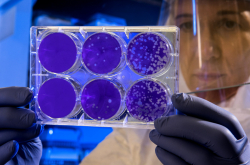3D beating heart. York University scientists have found a way to create 3D heart tissue that beats in synchronized harmony that will lead to better understanding of cardiac health and improved treatments. The researchers believe this is the first 3D in vitro cardiac tissue with three cell types that can beat together as one entity rather than at different intervals.
Taxis take flight. Dubai has tested a Chinese prototype of a self-driving hover-taxi with the aim of introducing the aerial vehicle in the emirate by July. The city state is committed to making a quarter of its means of transport are self-driving by 2030. The EHang 184 can travel on a programmed course at 100 kilometers an hour (60 mph) at an altitude of 300 meters (1,000 feet). A passenger simply needs to select a destination for the autonomous taxi to take off, fly the route and touch down in the chosen spot monitored by a ground control. The model can recharge in two hours and make trips of up to 30 minutes.
X-ray mirrors made with silicon. NASA scientist William Zhang has created and proven a technique for manufacturing lightweight, high-resolution X-ray mirrors using silicon—a material commonly associated with computer chips. Given the cost of building space observatories, the goal is to develop easily reproducible lightweight optics without sacrificing quality. The silicon-based X-ray mirror is lightweight, and super-thin, offers a significantly larger collection area and dramatically improved resolution, all at a reduced cost.
Five-kilometer geothermal well. Iceland Deep Drilling Project completed the deepest-ever geothermal well on 25 January. After 168 days of drilling, the well bottomed out at 4,659 meters, just shy of its 5-kilometre goal. Temperatures and pressures were so high at the bottom of the well that fluids were observed behaving in a "supercritical' fashion — as neither liquid nor gas — an observation that was one of the project’s goals. The well, on Iceland’s volcanic Reykjanes peninsula, is being used to explore the source of geothermal systems and to see whether supercritical fluids can be tapped as an energy resource.
Tires made from grass. A team lead by University of Minnesota invented a new technology to produce automobile tires from trees and grasses in a process that could shift the tire production industry toward using renewable resources found right in our backyards.




